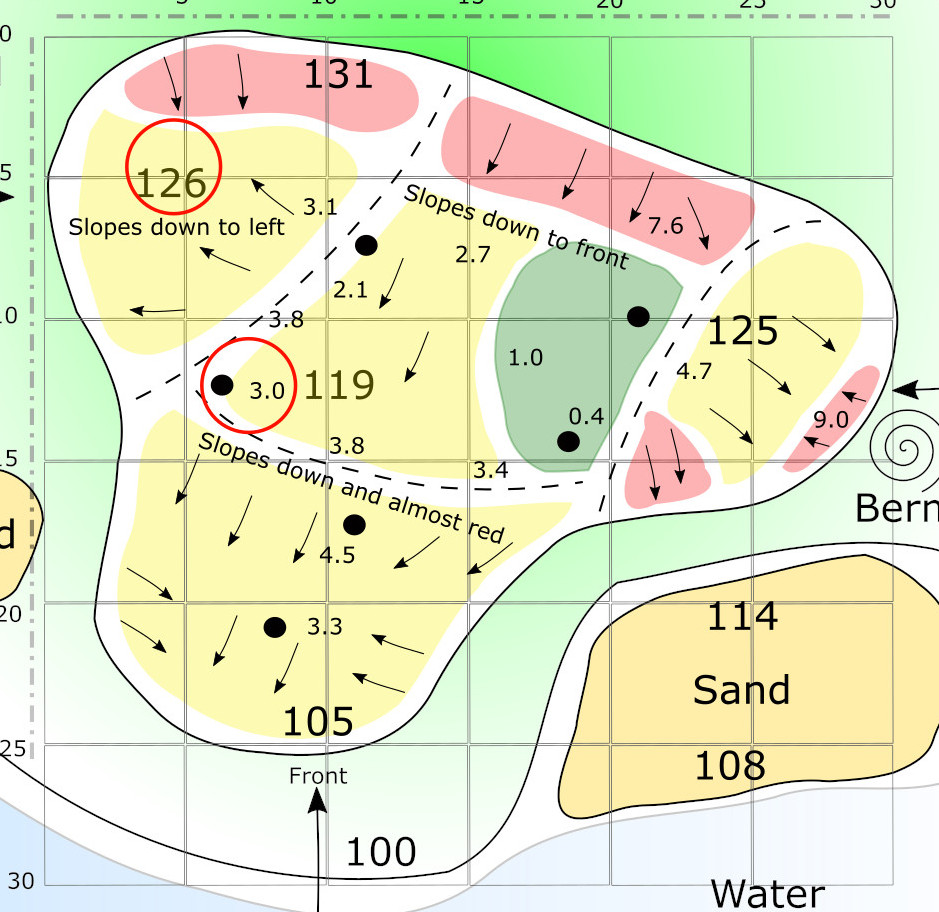Make a plan right from the tee box. Then reevaluate your plan once you get on the green. I’ve included an example from a recent round featuring our championship greens. In the article I show why it’s important to “make a plan.”
In a previous article, I wrote that I had made green maps for my local course. This is the 4th hole zoomed in. It’s a par 3 with an island green. The green is one of the biggest greens, but it’s all carry getting there.
The numbers on the green with decimal points are “degrees” of slope. There is only one flat spot on the whole green. It is intimidating from the tee and just as intimidating once you get on the green.
Here is a link to our Resources Page so you can see the slope values as a “percentage.” Example: 4 degrees is 7 percent slope. Anything over 2 degrees is getting up there in slope.
My plan from the tee
You need to make a plan from the tee and visualize where you are going to land the ball to give yourself a chance for par.
My plan from the tee was to land into the slope short of the “red circle” around 3.0 degrees. It would be hitting the ball into the bank. Leaving an uphill putt to a crown.
I was able to land the ball there, but it skipped and rolled to the 126 yard “red circle.”
That left me with an uphill breaking putt to a crown. You could easily roll 6 or 8 feet if you went by the hole.

Grid is in 5 yards increments – big green!!!
Black dots are previous hole locations
My plan from the green
Well, I went a little too far leaving myself in a place where I could easily 3 putt. I needed to make a plan.
My first thoughts were…”I’ve been here before and 3 putted.” That’s a bad thought.
I was determined to make a par. This may be the most brutal hole location on the green.
Walking up to the hole, I could feel the slope with my feet breaking to the right before the hole and leveling out just before the hole.
So, walking off the distance to the break was key. Then walking off the distance from the break to the hole was important so I didn’t hit it too far. Going too far results in rolling down a 4.5 degree slope.
It was a 25 foot putt with about 17 feet to the break. That left me room to leave the putt close, but short.
My new plan was to hit the putt about 20 feet uphill. It worked.
I made about a 3 to 4 footer and walked off the green with a big smile on my face.
Note: It really does pay to practice longer lag putts to be able to deal with large rolling greens.

